Augmented reality empowers locals to revisit cultural sites
- By: CHAN Hiu Ying、Ruoyu LIEdited by: Chun Hei LUK
- 2025-04-09
A red clock has mysteriously appeared on street lamps at Tai Hang, allowing people to revisit and immerse in the past cultural events under an augmented reality project called “City In Time”.
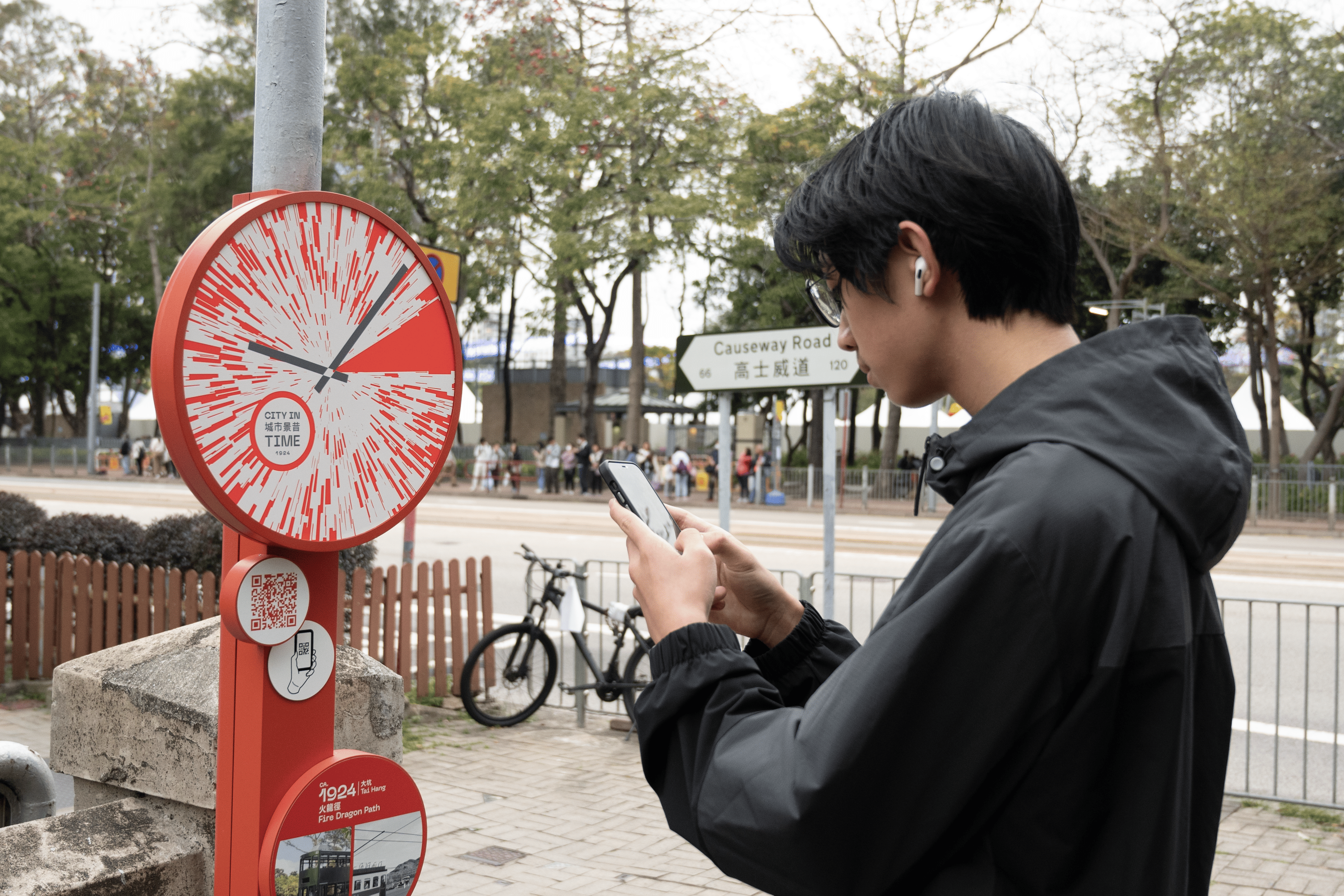
Jeffery Wang, 15, a secondary student, walked towards the red clock and scanned the QR code. Then a street scene of Tai Hang from the past appeared on his phone. By turning his phone around, he could see what the area looked like from different perspectives.
“It is quite an innovative thing. I have only read about Hong Kong’s past in textbooks. City In Time has given me a unique experience to know more about Hong Kong culture,” he said.
"City In Time" allows users to compare and experience historical scenes while standing in present-day surroundings at 39 designated locations around Hong Kong.
“The AR technology, primarily used in games, now allows users to immerse themselves in real cultural events at the locations they are standing through this app,” said Wong Tsz-yan, 22, a programme promoter. “Such experiences are more realistic compared to some presentations through picture and text descriptions.”
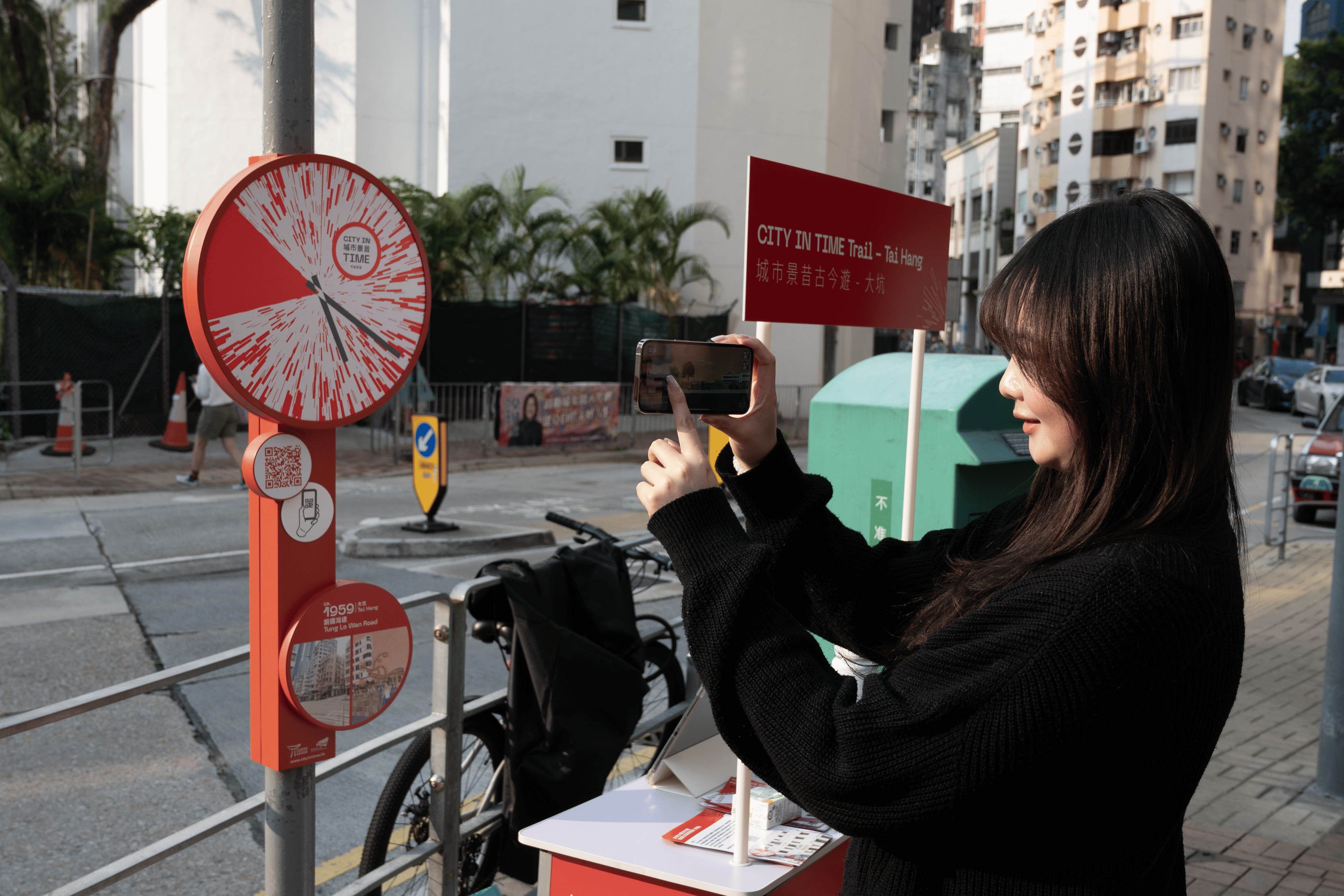
“Few people value Hong Kong’s culture anymore, especially its intangible aspects, and some of them are beginning to be lost,” Wong added.
Wong hopes the government can do more to preserve local culture, for example, by raising public awareness on traditional handicrafts, so that they will not be forgotten.
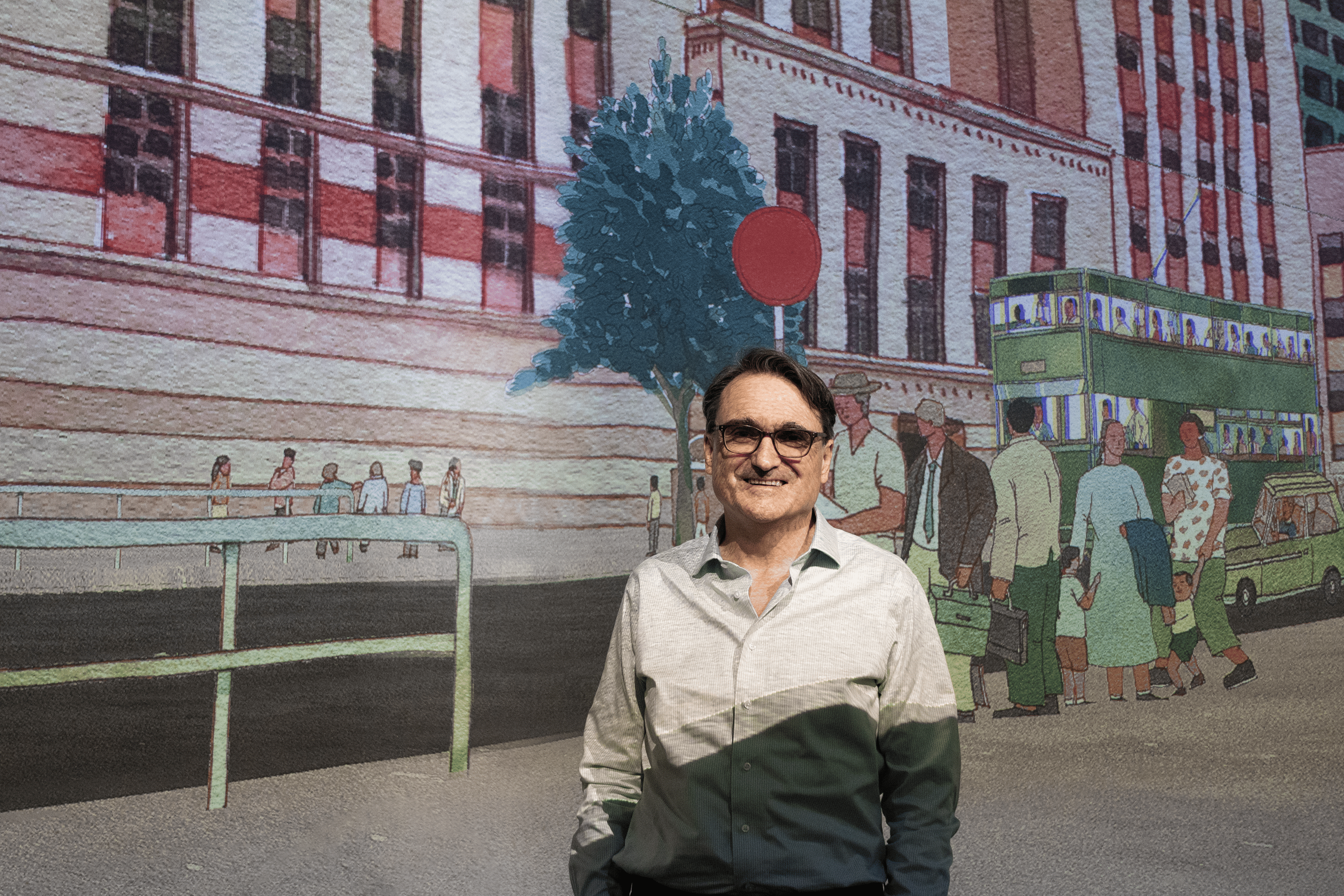
Richard William Allen, the project director of City In Time and the chair professor at the School of Creative Media at City University of Hong Kong, said that the project was initiated by the Tourism Commision in 2018. They aimed to develop more types of virtual tours and explore innovative ways to share Hong Kong's rich cultural heritage and environment with tourists and the public.
“When this opportunity arose, we considered how to create not just a fascinating cultural heritage experience in Hong Kong, but a unique experience in the world,” he added.
To achieve a 360-degree immersive experience, Allen and his team had to recreate the historical panorama of Hong Kong. They have conducted extensive research on all the architectural features and urban environments.
“We also engaged academic advisors and historians to verify that our depiction of Hong Kong's past is accurate. We referenced old photographs and looked at the available materials. This provides us with visual insights into Hong Kong's history to help us create these panoramas,” he said.

This project is not just about recreating Hong Kong's past, but also provides a platform for local artists, according to Shaw Jeffery, the artistic director of “City In Time”.
“We collaborated with 13 Hong Kong local artists and showcased the talents of Hong Kong's contemporary artists. This collaboration imbues our project with a very unique aesthetic value,” he added.
Shaw also said that when they worked on the panoramic photography at Lei Yue Mun, they consulted many local residents for details about the landscape and architecture, given the lack of sufficient historical photos.
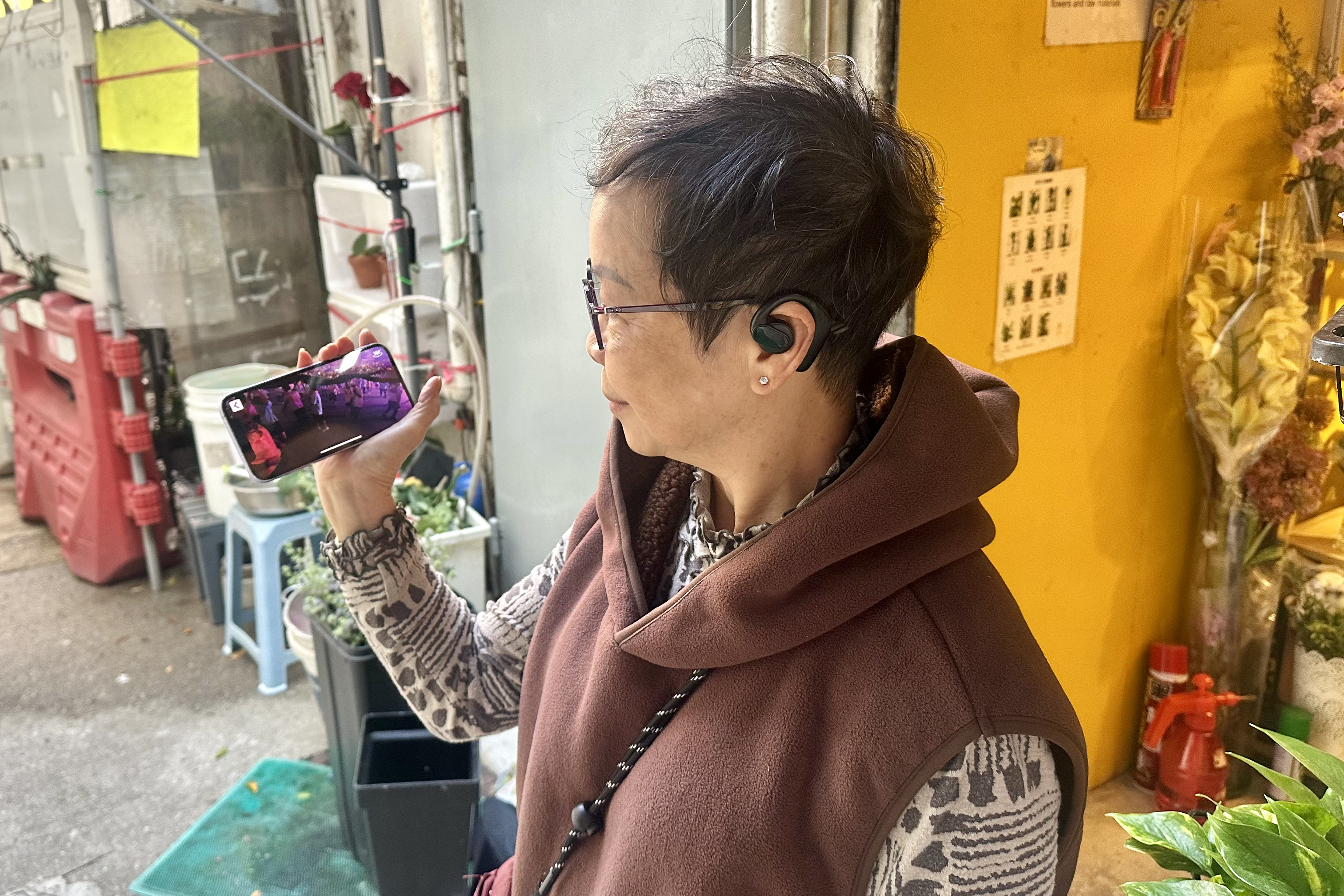
Tina Sin Sau-hing, 71, a flower shop owner and resident of Tai Hang, said that the artwork and the videos are quite accurate.
“Before fireworks were banned, it was common to see firecrackers on the rooftop of every building during the dance, and this now-defunct scene is also being displayed in the artwork,” Sin added.
Sin said that many people today are not aware of the cultural aspects. Even when they come to watch the dance, most do so for entertainment rather than truly understand the meaning behind it.
Elaine Chan Yin-lam, 19, a college student, said this project offers her a glimpse of unique events in Hong Kong, including scenes from before she was born.
“I have never watched a Tai Hang Fire Dragon Dance and would not have taken the initiative to watch it, but this website allows me to experience the unique scenes of the dance without having to go there on a specific date or festival,” Chan added.
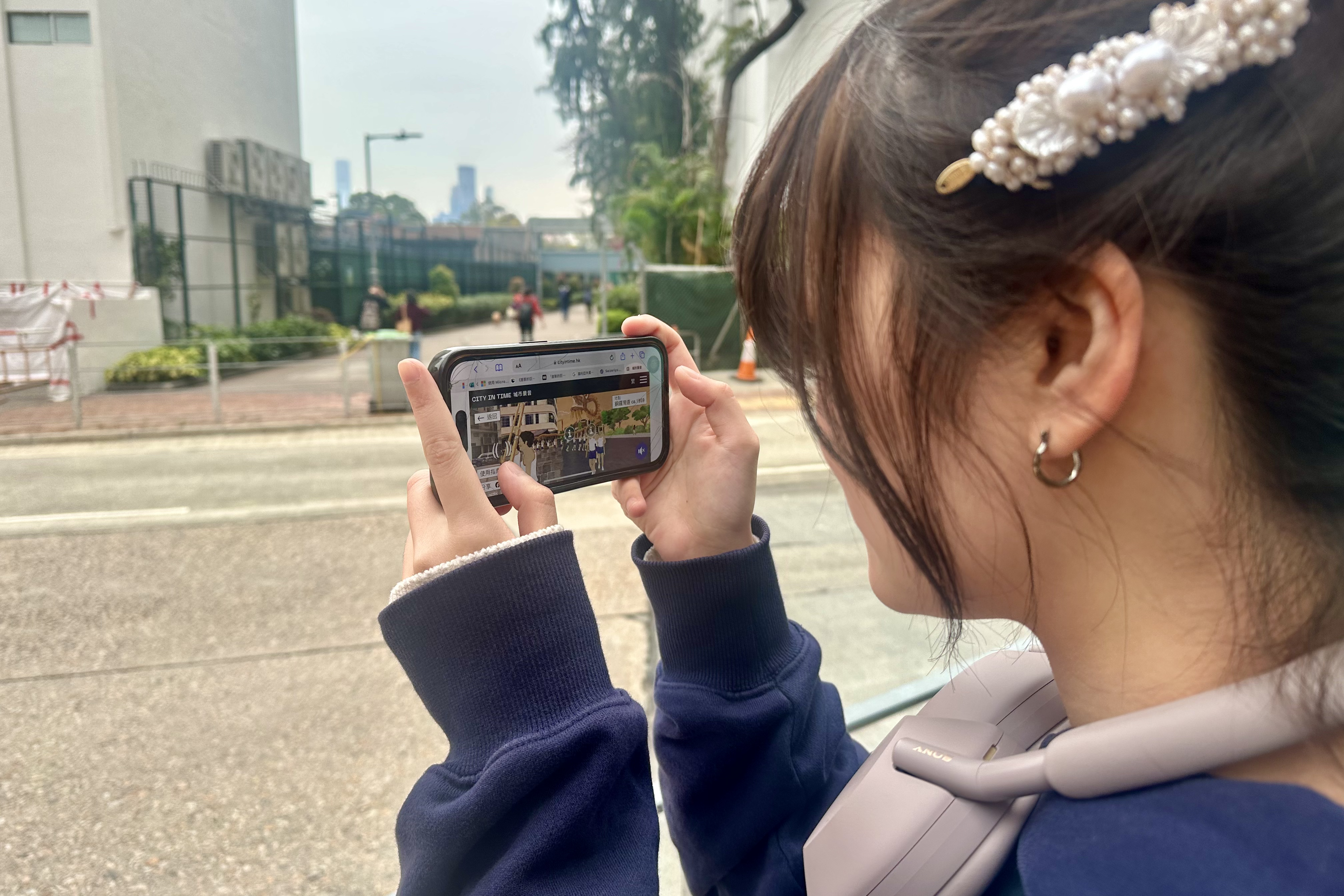
“I believe that young people can learn about local culture accurately from the present or past, because the illustrations shown are not boring and quite interesting,” Chan said.
She hopes to see more local fading culture in this project, including places like the closed Sunbeam Theatre.
The Heritage of Mei Ho House museum has set up a living hall on the original site to showcase the history of the community, along with the changes in local residents’ living habits and culture. The project is operated by the Hong Kong Youth Hostels Association.
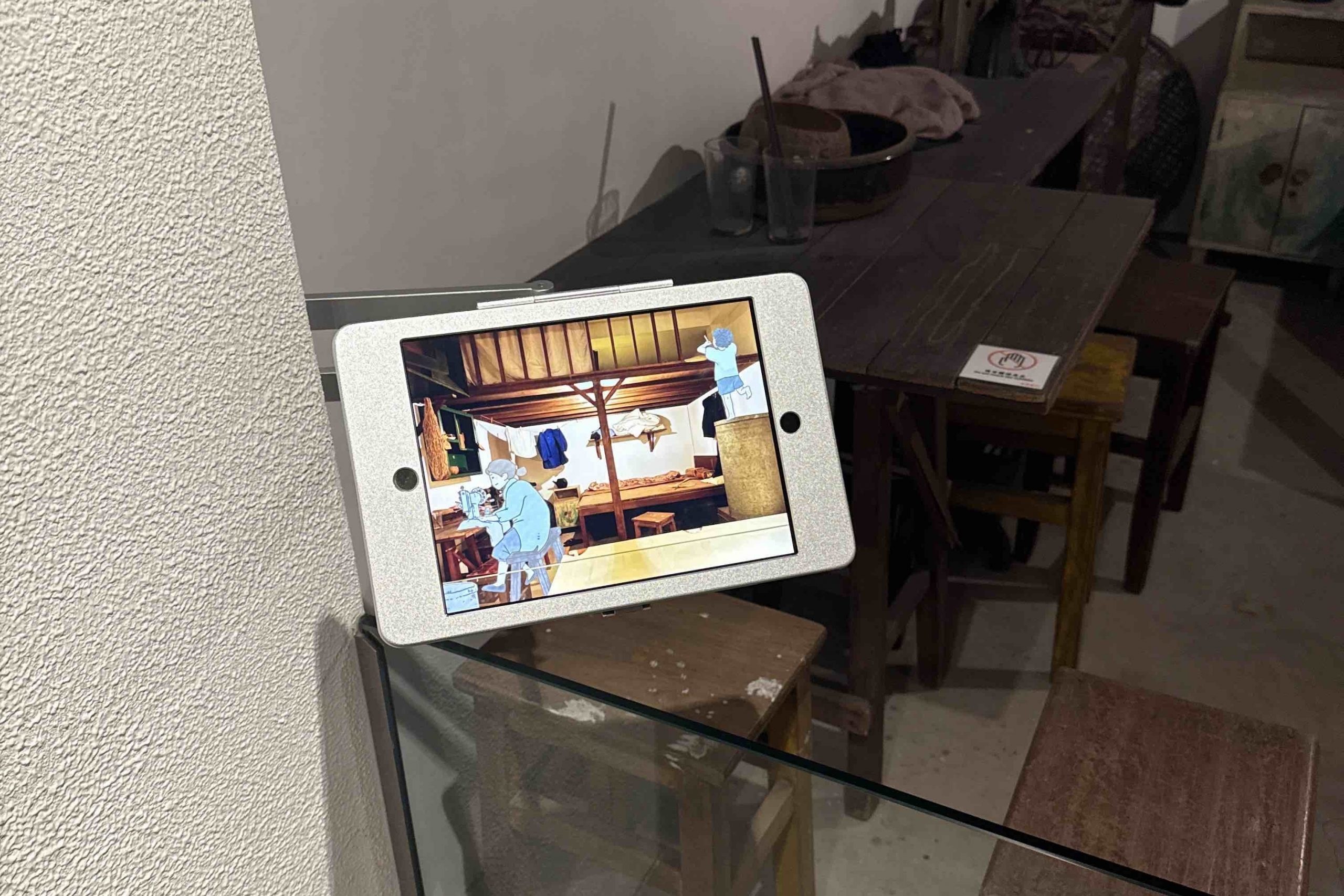
“The use of real objects in the living hall makes me feel like I am in that era, but I can only observe and cannot interact with them,” Chan said.
Chan added that using the “City In Time” app, users can follow the camera’s movement and compare present and past scenes by sliding through the screen, making the experience more engaging.
“Hong Kong is a relatively small place with a population of 7.5 million. Life here is quite dynamic, leading to rapid urban renewal. Consequently, history tends to be forgotten due to the constant changes, ” Richard added.
“The government should organise more interactive exhibitions to promote local culture because I don’t believe many people will take the time to stop and scan the QR code displayed on the road,” Chan added.
《The Young Reporter》
The Young Reporter (TYR) started as a newspaper in 1969. Today, it is published across multiple media platforms and updated constantly to bring the latest news and analyses to its readers.
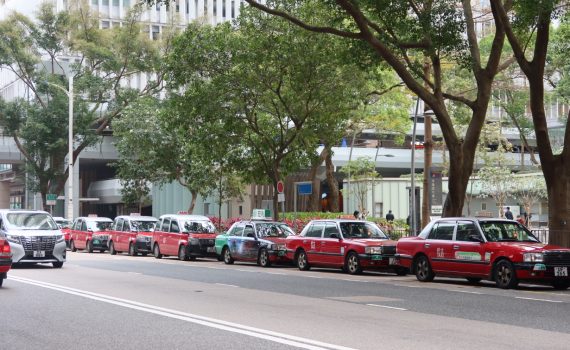
New taxi fleets aim to brush up the image of the industry

AI innovations at Art Central 2025




Comments